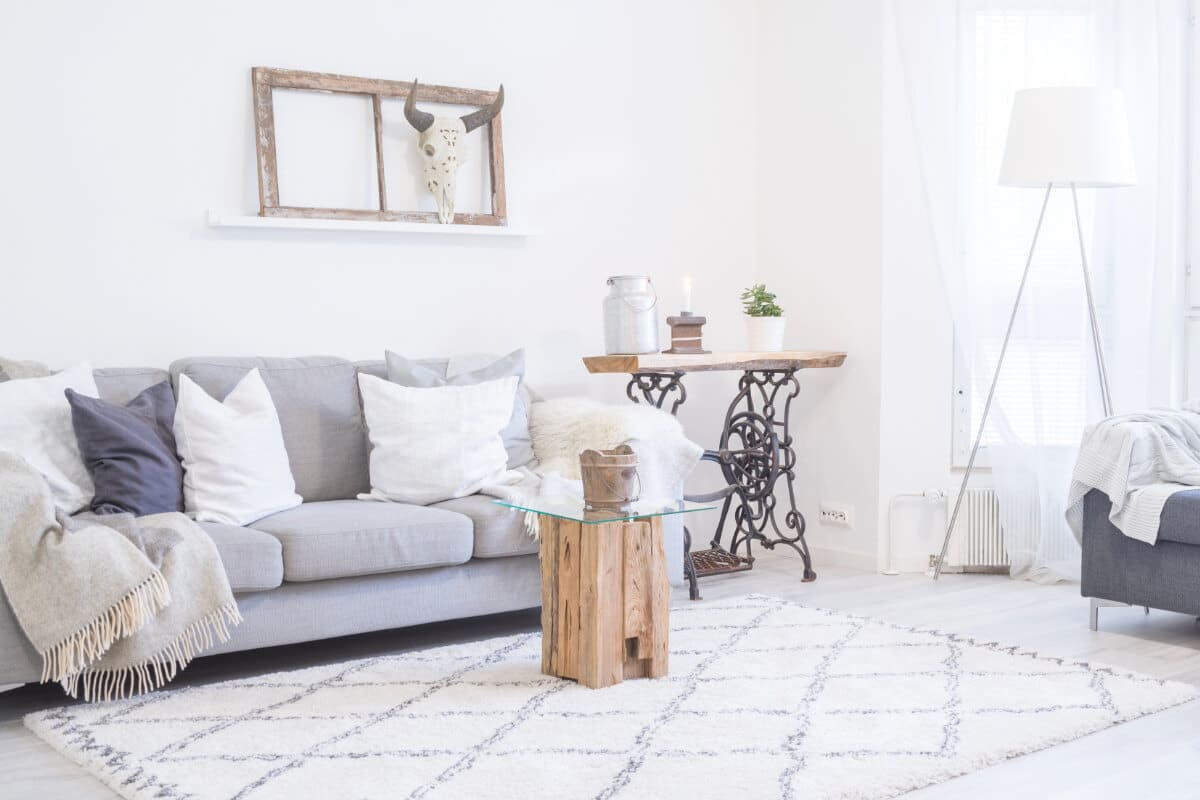Stepping into the world of interior design is akin to embarking on a fascinating journey of self-expression and artistic exploration. Mastering interior design revolves around individual preferences, aesthetic considerations, and the savvy application of design principles. This journey gives flight to personal taste, the impact of colors, the strategic placement of furniture, and the use of textures and patterns.
These crucial components work in harmony, creating a space that reflects one’s identity, provides comfort, and ignites inspiration. Embracing these elements, let’s unlock the potential of interior spaces and learn more about crafting homes that resonate with your essence and aesthetic leanings.
Table of Contents
- Discovering Your Artistic Leanings in Interior Design
- The Role of Colour in Interior Design
- Influence of Texture and Pattern in Design
- The Anatomy of Space: Layout and Furniture Placement
- Decorative Details: Final Touches in Interior Design
- Related Content
Discovering Your Artistic Leanings in Interior Design
Unleashing the Power of Personal Styles in Interior Design:
At the crossroads of art and functionality, we find interior design. This art form not only delights the eyes but also enhances the comfort and practicality of our living spaces. Establishing a personal style in interior design is an insightful journey of discovering and expressing your personality through the craft.
Let’s delve into how we can identify and develop this unique, distinctive artistic signature that can transform your space into a powerful narrative of your life and tastes.
1. Exploring who you are:
The first act of this journey should be to dive into your personal history, experiences, preferences, and values. What colors make your eyes light up? Which spaces do you genuinely feel at peace in? Remember that your goal here isn’t to follow trends but to understand what resonates with you deeply and intuitively.
Look for inspiration in your interests, travel experiences, favorite art pieces, or even favorite movies. Do you feel a deep connection with the rugged elegance of rustic farmhouse style, or do you resonate more with the sensibility of modern minimalism? All these influences provide the warp and weft to weave your unique interior design tapestry.
2. Seek out inspiration:
Once you’ve embarked on a journey of self-discovery, it becomes crucial to find inspiration. Look for it in nature, art galleries, design magazines, or inspirational websites like Pinterest and Instagram. One can also find fresh perspectives in the designs of hotels, restaurants, or even public spaces that feel harmonious and inviting.
Remember, the intent here is not to mimic but to find what sparks your creative joy and use that as a seed for your imaginative renditions.
3. Experiment and refine:
Our art is an ongoing conversation with ourselves. Experimentation forms the heart of this dialogue. Play around with different styles until you find a blend that feels like YOU. Remember that your space is dynamic, transforming as your tastes evolve and life stages change.
Trial and error might seem a tad uncomfortable at first. Still, through this process of creation, feedback, and refinement, your style takes shape and sharpens, resulting in a unique living environment tailored to your personality.
4. Seek Professional Help:
Sometimes, it might seem challenging to translate this abstract sense of style into tangible design. When you feel overwhelmed or uncertain, remember that professionals can guide you along this path.
An experienced interior designer can help you filter and consolidate your aesthetic preferences, create mood boards, suggest materials, and provide an overall direction for your signature style.
In essence, developing your style in interior design is a beautiful process of self-expression. It’s about understanding, exploring, defining, and refining– an eclectic blend of your past, present, and future, interwoven with threads of taste, lifestyle, and personal experiences. So, embark on this artistic journey with patience, love, and, most importantly, the spirit of discovery. Let your living space be a canvas painting a vivid story of who you are.
The Role of Colour in Interior Design
Delving Into The Power of Color in Interior Design
Color is not just an aspect of design; it’s an adventure, a voyage into the subconscious. It is a translator of emotions, and in interior design, the colors chosen are akin to the heart and soul of a space. Every hue, every shade possesses a distinctive voice, silently but poignantly imposing its unique psychology upon the environment and those inhabiting it.
Colors have the compelling ability to alter and dictate our perception of space. Bold, vibrant colors can render a room more intimate and energetic, while softer tones impart a sense of tranquility, making a space feel more extensive and more serene.
The interplay of room size and color selection is like an intricate dance, where colors work together with spatial elements, reflecting light and affecting mood.
As one sympathizes with the palette, fascinating themes begin to take shape. The color pairs, the contrasts, and the harmonies play their part in visual storytelling, spinning tales of vibrant diversity or serene simplicity–each vibrant or muted tint whispering its piece in this colorful conversation.
Believe it or not, colors are like chameleons; they adapt, absorb, and reflect the qualities of their surrounding colors. In interior design, contingent upon its surroundings, a single color can vary radically when facing different lights, adjacent colors, or textures. It is vital to analyze the partner palette for a color to preview how it might evolve within its new home space.
But perhaps the most profound repercussion of color choice lies in its power to influence our moods and mindset. Green is universally known to inspire tranquility, ushering in tranquility and warmth.
Blue, its hue equivalent to calm and serenity, reduces stress and creates an aura of peace. Reds invigorate, yellows cheer, oranges stimulate, while neutrals ground. The psychology of color, deeply ingrained in our minds, creates sensory responses, making us feel a certain way.
The magic of color in interior design lies in its endless possibilities. The ability to turn a blank canvas into an artistic masterpiece, communicate without words, entice the senses, and influence moods – this transformational power makes color an indispensable tool in interior design.
Ultimately, it’s not just about selecting a color because it’s pretty. It’s about understanding its character, story, impact, and interaction with the space; for this reason, a creative mind and a keen eye play a crucial role in interior design.
It is about creating a symphony of color, setting a tone reflecting the soul of the space and its inhabitants. While everyone may not speak the complex language of color fluently, having a guide to its rhythm and textures can be an enlightening, enriching experience— a fresh brushstroke on the canvas of a personal design journey.
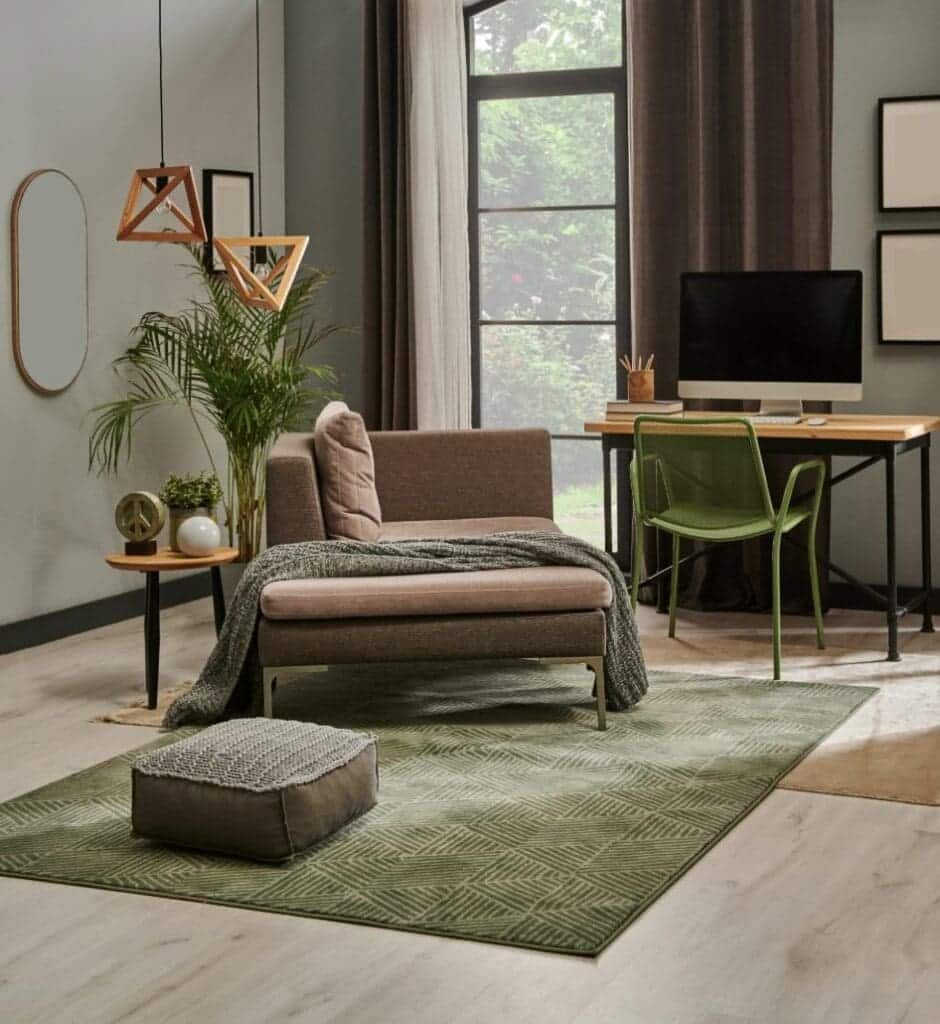
Influence of Texture and Pattern in Design
Texture and Pattern: The Magic Key to Unleashing a Room’s Design Potential
Stepping into the world of interior design, artworks are more than just accessories to the space. They are significant elements that can make or break its overall look. Just as important as color are two other crucial components – texture and pattern.
These elements may not be as visible as color, but they are pivotal in defining and enhancing the room’s ambiance.
Textures involve a surface or substance’s feel, appearance, or consistency. In the marvelous realm of designing, using different textures can easily take a room from flat and dull to rich and inviting. It’s like turning a sketch into a three-dimensional sculpture, adding depth and visual weight to the space.
Consider combining both soft and rough textures. Maybe throw in a velvet couch, a heavy knit throw, or some distressed wood accent pieces. These inject a unique character into the room and add multi-dimensional interest. Moreover, variances in texture offer a tactile allure that can make a space incredibly engaging.
On the other hand, patterns can remarkably communicate personality and narrative without uttering a single word. These range from stripes, polka dots, abstract forms, and animal prints to orientations that depict traditional or cultural symbols. Well-chosen patterns can serve as an artistic reflection of history, culture, or even one’s personal story.
Patterns inspire the eyes to dance around the room, adding rhythm and movement. But be extra cautious not to overwhelm the room as excessive use might lead to a visual mess rather than a harmonious ensemble.
Perhaps stick to using one bold pattern complemented by two or three subtler patterns. Patterns can be incorporated through accessories like rugs, throw pillows, wall decor, or even through the room’s architectural details.
Both textures and patterns have marvelous power to evoke emotions and responses. They deepen a room’s presence and richness. Whether with the plush feeling from a shaggy rug under bare feet or the captivating attraction of a houndstooth pattern on a favorite chair, textures and patterns both impact our sensory experiences.
Lastly, remember that design—no matter how magnificent or opulent, is worthless unless it tells the story of the people inhabiting the space. Every choice, from colors to textures and patterns, should be thoughtfully selected—not just to be visually appealing but to echo the heart and soul of the room.
So do not ground the creative wings in fear of making mistakes. Experiment with different textures and patterns. Understand the rules, but don’t shy away from bending them when necessary. After all, the most memorable interiors often dare to be different and, yes, even imperfect.
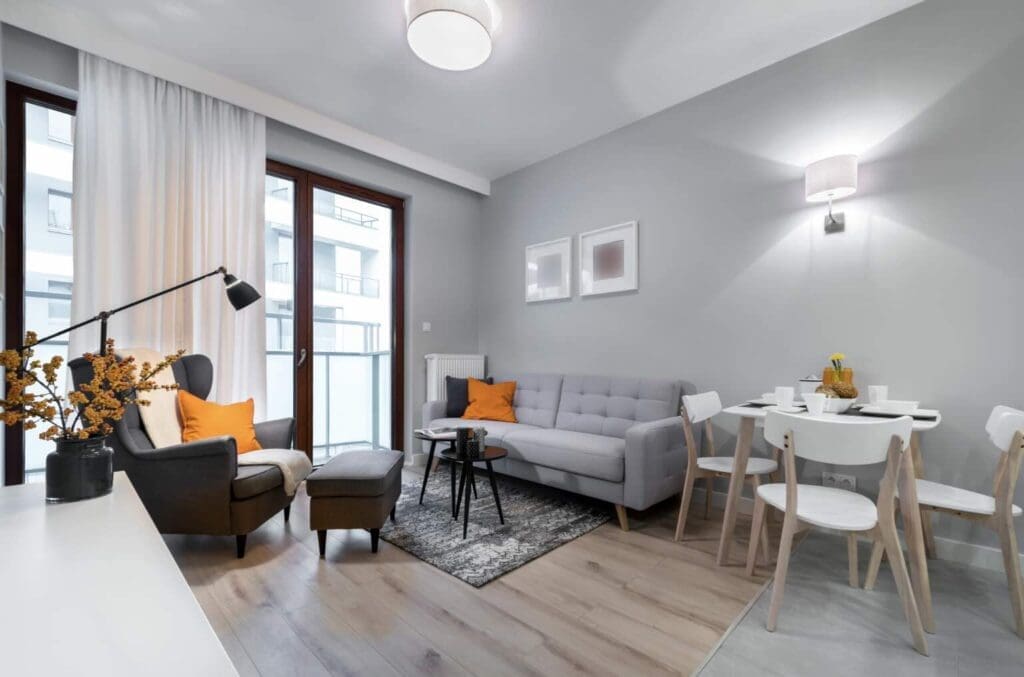
The Anatomy of Space: Layout and Furniture Placement
Once the foundation of personal style, color, texture, and pattern has been layered with love and intention, the next consideration is the placement of furniture and arrangement of the space – an essential aspect of interior design.
A room can be filled with beautiful, lovingly chosen pieces, but without careful consideration of composition and flow, the beauty and function of the room will not be fully achieved.
The process is not merely about filling a room with furniture. Instead, it’s about creating a hub for life’s activities while displaying your style. It begins with analyzing the room’s purpose, how it will function, and who will use it. Is it a restful sanctuary, a creative studio, or a place for social connection? A room’s purpose significantly influences the layout and placement of furniture.
An exceptional interior design transforms not only the aesthetics but also the function of a space. Considering traffic patterns is crucial in this transformation, as understanding how people move through, across, or around a room is essential.
Furniture must be placed to guide and ease this movement while avoiding obstacles or disruption. Clever design thinks about clearance, ensuring enough room for people to pass through comfortably – after all, a beautiful room that doesn’t allow comfortable movement will not be enjoyed to its fullest potential.
Spatial balance is another factor that can dramatically impact your room’s overall ambiance. A balanced room does not mean everything needs to be symmetrical, but rather that the visual weight of items in the space is evenly distributed.
There should be a thoughtful balance between large and small, tall and short, heavy and light pieces. This balance creates an underlying feeling of calm and order, allowing each piece to shine without overwhelming the senses.
In arranging furniture, don’t forget the decisive role of focal points. These are areas or objects that immediately draw the eye and command attention. It could be a stunning fireplace, a beautiful window view, or an impressive piece of art. Using the focal point as the anchor, arrange your furniture around it, building a story that naturally guides the eye around the room.
And finally, don’t forget the art of negative space. It’s easy to fill a room with beautiful things, but a successful design isn’t about how many things are in the room but their relation to each other.
Crowding a room can create a sense of heaviness and mess. Allow breathing space around your furniture. This doesn’t mean leaving large parts of a room empty – just enough space so each piece can be appreciated and function as intended.
In conclusion, the journey of interior design is not just about color and style. It is a dance encompassing rhythm, balance, and space. It’s not just what you put in a room; the space around the items allows the design to breathe and the room’s soul to shine.
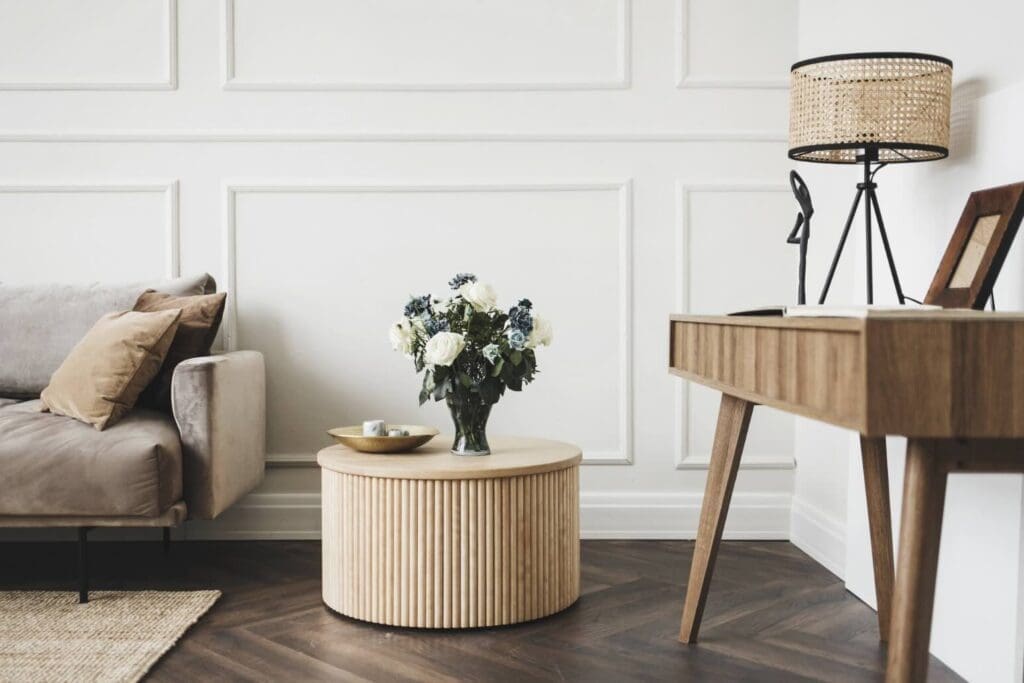
Decorative Details: Final Touches in Interior Design
Composition and flow are fascinating variables in the realm of interior design. They act as invisible threads, tying the different design elements into a harmonious symphony. It is essential to be organized and intuitive when planning the layout of a room.
Beyond mere aesthetics, a room’s composition designates the space’s function. Whether it’s a tranquil reading nook or a lively family living area, the arrangements of the interior elements solidly resonate with the room’s purpose.
It’s an artful puzzle of choreographing furniture pieces, ensuring seamless traffic patterns and comfortable movement. The symphony arises with each furniture piece harmonizing with another, each playing its part beautifully and contributing to the grand melody.
Like a well-tuned instrument, a well-balanced room sparks a sense of calm order. Achieving this balanced ambiance is much like striking the perfect chord. It requires understanding the weight and potential of each design element.
For instance, using focal points to guide furniture arrangement is a creative strategy to maintain balance. They act as the maestro, directing the flow and the visual melody.
The art of negative space plays a vital role in the composition and flow of a room. It’s the ‘pause’ in the melody, the ‘rest’ in the composition. Thoughtfully embracing negative space allows the room to breathe, giving each design element room to shine in its spotlight without overwhelming the senses.
Interior design is a holistic journey that swirls beyond color palettes and personal styles. It’s a dance that involves furniture, patterns, colors, textures, and lighting. Each aspect of design interplays with the other, converging to generate a symphony of artwork that shares a tale, expresses a mood and sets a tone.
Land the element of surprise. It softens the routine, stirs curiosity, and sprinkles magic into the everyday. Unexpected pops of color, creative use of patterns, or innovative furniture arrangements keep the room vibrant and captivating.
Lastly, the artful choreography of elements in interior design is incomplete without considering lighting. The true essence and character of every design translate through light. Natural daylight, a warm yellow bulb, or a soft white glow emits a different vibe.
Thus, the interplay of light with other design elements, from enhancing color vibrations to casting shadows on surface textures, is a pivotal secret in mastering the art of interior design.
In this creative journey entire of experimentation, the touch of imperfection imparts uniqueness and sets a home apart. Giving space for personal creativity to flourish and allowing it to shape the home’s character adds a final touch of magic to interior design. So, stay curious, explore boldly, and cherish the elegance of imperfection.
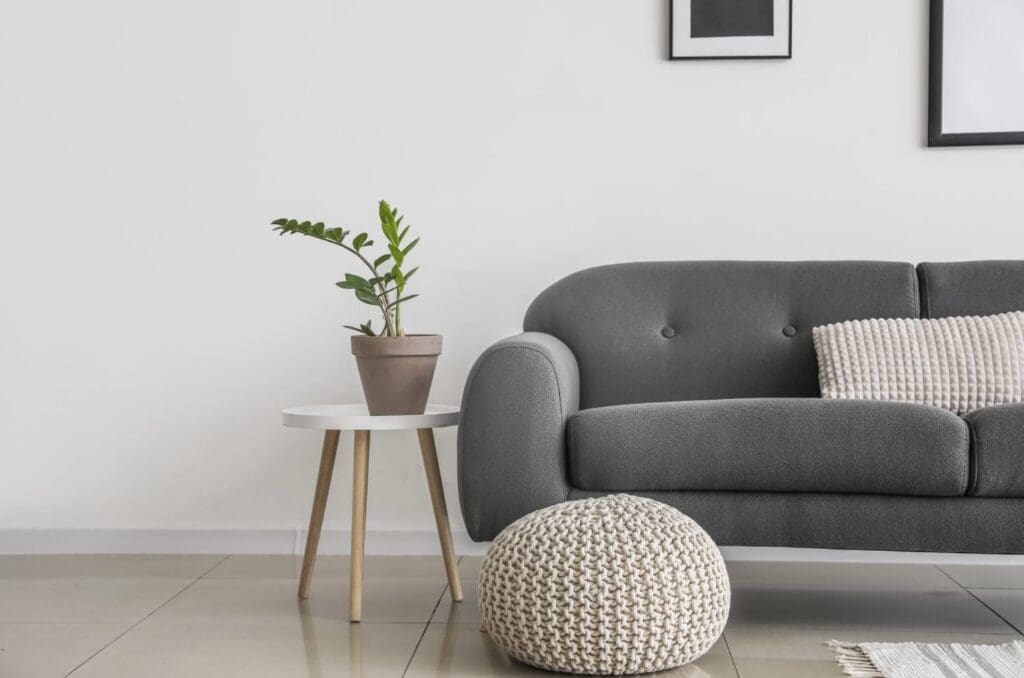
Cultivating an informed understanding of interior design is an enriching experience that plugs us into our creative source, uncovering our artistic leanings and authentic expression.
From mastering our preferences to navigating the anatomy of space, we are continually shaping our living spaces to echo our unique stories and personalities. We subtly infuse our surroundings with life and meaning by combining various textures and patterns or curating a harmonious color palette.
The knowledge of these details and the deliberate placement of final decorative touches bring out the magic in our interiors, completing them as rooms and as reflections of ourselves. Here’s to designing homes with charm, elegance, and personal touch.
Find out more about how Mondoro can help you create, develop, and manufacture excellent home decor and furniture products – don’t hesitate to contact me, Anita. Check out my email by clicking here or become a part of our community and join our newsletter by clicking here.
Mondoro gives out a FREE Lookbook to anyone interested. You can receive a copy of our latest Lookbook by clicking here.
Listen to our Podcast called Global Trade Gal. You can find it on all major podcast platforms. Try out listening to one of our podcasts by clicking here.
Subscribe to our Mondoro Company Limited YouTube Channel with great videos and information by clicking here.
Related Content
Scandinavian Interior Design Description – Contemporary Living Spaces
Ever since my time in Sweden, I’ve developed a deep affection for Scandinavian design. Scandinavian design is a clean yet significant-looking trend.
Its minimalist yet compelling aesthetic has a timeless quality and continues to make waves globally. Far from being a fleeting fad, this design style has a lasting influence. Keep reading as we explore the subtleties that make Scandinavian interior design unique.
By clicking here, you can learn more by reading our blog, Scandinavian Interior Design Description – Contemporary Living Spaces.
Home Decor Vs. Interior Design: A Detailed Comparison
Home decor and interior design are two different aspects of design. These fields differ significantly in their scope, methodology, and objectives. Grasping these subtleties can optimize your domestic or commercial spaces. Read on as we explore some of the unique differences between home decor and interior design and define what each means.
To learn more, you can read Home Decor Vs. Interior Design: A Detailed Comparison by clicking here.
12 Living Room Home Decor Wall Ideas For Your Empty Walls
Filling the void with the right blend of style, function, and personality is crucial for setting the tone of your living room; this is where wall décor comes in, offering endless possibilities to transform your blank walls into an enticing visual narrative. Read on as we delve into twelve creative ideas for your living room wall decor, incorporating elements such as wall art, mirrors, artifacts, hanging plates, and more.
You can discover more by reading 12 Living Room Home Decor Wall Ideas For Your Empty Walls by clicking here.

